Para-Sport Athlete Powerful Progressive Strength To Be No.1
Mental Landscapes of Adaptive Para-Athletes & Sport
Para-Sport as Psychological Reclamation
Para and disabled sports are not merely athletic adaptations – they are psychological crucibles where identity, agency, and cultural resistance are forged. Athletes in these domains often confront not only physical barriers but also entrenched societal narratives about ability, worth, and visibility. Participation in sport becomes a form of narrative re-authoring – a way to reclaim autonomy and reframe disability as a site of strength rather than deficit. Research across sports psychology, disability studies, and neurocognitive science reveals that adaptive athletes develop distinct mental frameworks to navigate pain, stigma, and performance pressure. These frameworks are shaped by lived experience, community validation, and symbolic representation. The psychological terrain of disabled sport is layered – encompassing trauma recovery, identity reconstruction, and social transformation.

Identity Reclamation Through Performance
Disabled and para athletes often experience a profound shift in self-perception through sport – transitioning from medicalized identities to empowered ones. Sport offers a symbolic space where physical difference is reframed as capability and strategic intelligence. Studies show that sustained participation in adaptive sport correlates with increased self-esteem, reduced depressive symptoms, and stronger self-efficacy. This transformation is not passive – it requires active engagement with community, visibility, and recognition. The athlete’s body becomes a site of narrative resistance – where trauma and limitation are reinterpreted through movement. Identity reclamation also involves confronting internalized ableism – the belief that disability is inherently negative or limiting. Coaches, teammates, and spectators play critical roles in affirming new identities. Media representation can either reinforce or challenge these psychological shifts. Ultimately, sport becomes a mirror where disabled athletes see themselves as capable, strategic, and whole.
Early Childhood – Foundations of Agency and Play
For children with disabilities, sport introduces agency long before formal identity takes shape. Adaptive play environments foster motor development, spatial awareness, and emotional regulation. Research in pediatric psychology shows that early exposure to movement-based activities improves cognitive flexibility and social engagement. Sport becomes a language—where children learn to express autonomy, test boundaries, and experience joy without medical framing. Inclusive sport settings also reduce parental anxiety and promote family bonding. Coaches and caregivers who prioritize play over performance help children internalize positive body narratives. Symbolically, sport in early childhood reframes disability as exploration rather than limitation. These foundational experiences shape long-term self-concept and resilience. Children who feel capable in movement tend to approach learning and relationships with greater confidence. Sport becomes a ritual of becoming—where identity is not imposed, but discovered through motion.

Adolescence – Identity Formation and Peer Belonging
Teenage years are psychologically volatile—marked by identity exploration, peer comparison, and emotional intensity. For disabled adolescents, sport offers a stabilizing force and a platform for self-definition. Studies in adolescent development show that team participation enhances self-esteem, reduces social isolation, and fosters emotional regulation. Sport becomes a counter-narrative to stigma—allowing teens to perform strength, strategy, and leadership. Peer validation within sport environments reinforces belonging and reduces internalized ableism. Disabled teens often report that sport helps them navigate bullying, body image struggles, and academic stress. Coaches who understand adolescent psychology can help athletes set meaningful goals and manage emotional highs and lows. Sport also introduces symbolic roles—captain, mentor, competitor—that expand identity beyond diagnosis. In adolescence, disabled sport is not just physical—it’s mythic, offering teens a way to author their own coming-of-age story.
Young Adulthood – Autonomy, Advocacy and Career Identity
In early adulthood, sport becomes a crucible for autonomy and self-authorship. Disabled athletes often use sport to assert independence, challenge societal expectations, and explore career pathways. Research shows that para-athletes in this stage report higher levels of self-efficacy, emotional resilience, and civic engagement. Sport fosters strategic thinking, time management, and leadership—skills that transfer directly into employment and education. Athletes often become advocates, using their visibility to challenge policy and expand access. Romantic relationships also evolve—sport affirms bodily autonomy and desirability, reshaping how disabled adults experience intimacy and partnership. Coaches who support holistic development help athletes navigate transitions—graduation, employment, relocation—with psychological clarity. Sport becomes a symbolic anchor—reminding athletes of their strength, adaptability, and purpose. In young adulthood, disabled sport is not just a hobby—it’s a blueprint for life design.
Midlife – Integration, Mentorship and Psychological Maturity
By midlife, disabled athletes often shift from performance to integration—using sport as a tool for mentorship, reflection, and community building. Psychological research shows that sustained sport participation enhances cognitive vitality, emotional regulation, and life satisfaction. Athletes in this stage often become coaches, organizers, or cultural leaders—transmitting wisdom and shaping inclusive ecosystems. Sport helps navigate midlife transitions—career shifts, parenting, health changes—with resilience and symbolic coherence. Disabled athletes often report that sport provides continuity—a ritual that grounds identity across decades. Mentorship becomes central—athletes guide younger peers through trauma, stigma, and performance anxiety. Sport also supports psychological maturity—fostering acceptance, strategic adaptation, and emotional depth. In midlife, disabled sport is not about proving—it’s about sustaining, connecting, and evolving.

Older Adulthood – Legacy, Neuroplasticity and Cultural Memory
In later life, disabled sport becomes a site of legacy and cognitive renewal. Research in gerontology shows that adaptive physical activity delays cognitive decline, enhances neuroplasticity, and improves emotional wellbeing. Older athletes often report renewed purpose, intergenerational connection, and symbolic healing. Sport becomes a memory archive—each movement layered with history, resilience, and transformation. Cultural memory is transmitted through storytelling, ritual, and performance. Disabled elders in sport challenge ageism and redefine what it means to grow older with agency. Coaches and institutions that support lifelong participation foster healthier communities and richer symbolic ecosystems. Sport also becomes spiritual—connecting body, memory, and meaning in ways that transcend competition. In older adulthood, disabled sport is not just movement—it’s myth, legacy, and embodied wisdom.
Family Systems – Sport as Relational Recalibration
Disabled sport doesn’t just reshape individual psychology—it reverberates through entire family systems. For many families, sport becomes a catalyst for relational healing, role renegotiation, and emotional growth. Research in family psychology shows that when a disabled member engages in sport, familial perceptions of capability, autonomy, and identity often shift. Parents move from protective oversight to collaborative support—witnessing their child’s agency in motion. Siblings often report increased empathy, pride, and shared purpose. Sport introduces new rituals—training schedules, travel, competition—that restructure daily life and deepen emotional bonds.
The athlete’s performance becomes a symbolic mirror—reflecting back to the family their own resilience, adaptability, and capacity for transformation. Families often experience reduced stress and improved communication as sport provides structure and shared goals. In cases where disability was previously framed through medical or deficit-based lenses, sport reframes the narrative—offering a language of strength, strategy, and celebration. This shift can reduce internalized stigma and foster more inclusive family identities.
Sport also challenges traditional caregiving roles. Athletes who gain independence through movement often renegotiate boundaries around support, privacy, and decision-making. This can lead to tension—but also to growth, as families learn to trust and recalibrate. Coaches and sport psychologists who engage families in the process tend to foster more sustainable athlete development. Family involvement in disabled sport isn’t just logistical—it’s psychological, symbolic, and deeply relational.
In multi-generational households, sport can bridge age gaps—offering shared meaning across grandparents, parents, and children. It becomes a site of storytelling, legacy, and emotional continuity. Families who witness disabled athletes perform often report increased social confidence and reduced isolation. Sport becomes a relational anchor—holding together identity, memory, and future aspiration. In disabled sport, family is not just a backdrop—it’s a co-author of resilience, ritual, and transformation.
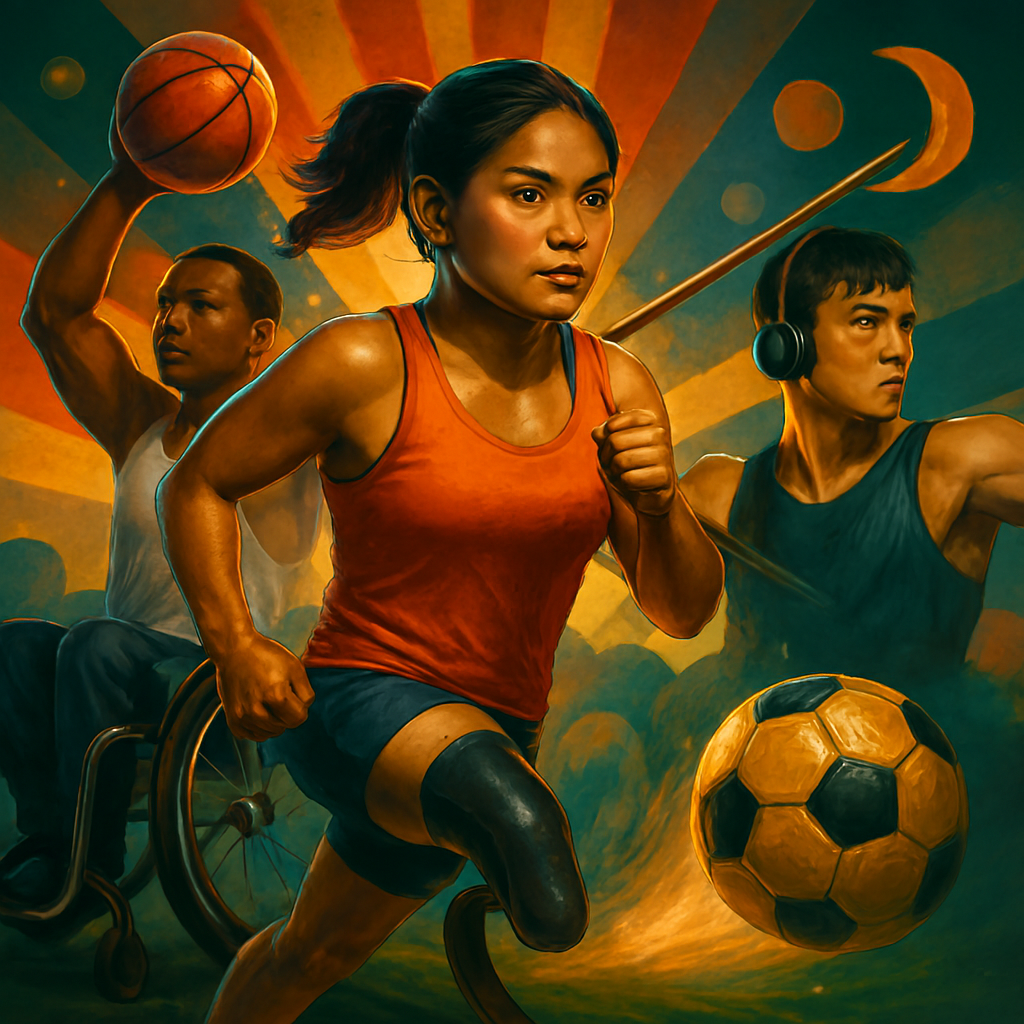
Joy in Motion – The Psychology of Fun in Disabled Sport
Fun isn’t a distraction from performance—it’s a psychological engine that powers resilience, creativity, and emotional recovery. In disabled sport, fun takes on layered meaning—it’s not just about amusement, but about reclaiming play as a form of agency. Research in positive psychology shows that joy enhances neuroplasticity, reduces cortisol, and strengthens social bonds. For disabled athletes, fun often emerges in moments of improvisation, shared laughter, and unexpected success. It’s the feeling of movement unburdened by medical framing—the thrill of speed, the rhythm of teamwork, the absurdity of a missed shot turned into a dance.
Fun also disrupts stigma. When disabled athletes are seen laughing, celebrating, and playing with abandon, it challenges narratives of fragility and dependence. Sport becomes a stage for emotional freedom—where humor, spontaneity, and symbolic play are not only allowed but essential. Coaches who cultivate fun foster psychological safety and long-term engagement. Athletes who experience joy in training are more likely to persist through setbacks and build deeper team cohesion.
Fun is also ritualistic—embedded in chants, nicknames, inside jokes, and celebratory gestures. These micro-moments of levity create emotional texture and cultural identity within teams. Disabled sport reclaims fun from pity and performance pressure—restoring it as a birthright of movement. For many athletes, fun is the first emotion they feel that isn’t filtered through diagnosis—it’s pure, unqualified, and deeply human.
In para and disabled sport, fun is not frivolous—it’s foundational. It reminds athletes why they started, what they love, and how their bodies can still surprise them. It’s the joy of motion, the pleasure of connection, and the symbolic defiance of every system that said they couldn’t. Fun is the heartbeat of disabled sport—and it’s what makes the struggle worth it.
Motivation and Adaptive Goal Setting
Motivation in disabled sport is shaped by layered psychological factors – including autonomy, mastery, and social validation. Athletes often set goals that reflect both personal growth and collective representation. Research indicates that intrinsic motivation is higher among para-athletes who perceive their sport as meaningful and identity-affirming. Goal setting is often adaptive – accounting for fluctuating physical conditions, accessibility barriers, and systemic inequities. Coaches who understand disability-specific psychology can help athletes set realistic yet challenging goals that foster resilience. Motivation is also influenced by visibility – athletes who feel seen and valued tend to persist longer and perform better. External rewards are less predictive of success than internalized purpose and community support. The motivational architecture of disabled sport is dynamic – shaped by personal history, cultural context, and symbolic aspiration. Athletes often use visualization, journaling, and ritual to reinforce their goals and maintain focus.
Resilience and Psychological Recovery
Resilience in disabled sport is not simply about bouncing back – it’s about reconstructing meaning after disruption. Many para-athletes begin their journey following traumatic injury, congenital conditions, or progressive illness. Sport becomes a vehicle for psychological recovery – offering structure, community, and symbolic agency. Studies in trauma psychology show that physical activity can reduce PTSD symptoms, improve emotional regulation, and foster post-traumatic growth. Disabled athletes often develop unique coping strategies – including cognitive reframing, mindfulness, and narrative therapy. Resilience is also social – shaped by peer support, mentorship, and cultural validation. Adaptive sport environments that prioritize psychological safety tend to produce more resilient athletes. Recovery is nonlinear – setbacks are common, but they often become catalysts for deeper transformation. The resilience of disabled athletes is not just personal – it challenges societal assumptions about fragility and dependence.
Pain Management and Cognitive Strategies
Pain is a frequent companion in disabled sport – whether from chronic conditions, injury, or overuse. Athletes develop sophisticated cognitive strategies to manage pain without compromising performance. Research in neuropsychology shows that techniques like distraction, visualization, and acceptance-based therapy can reduce perceived pain intensity. Some athletes use biofeedback and breathing techniques to regulate physiological responses. Others rely on narrative reframing – interpreting pain as a signal of growth or boundary-testing. Pain management is also cultural – shaped by norms around toughness, vulnerability, and disclosure. Coaches who understand the psychological dimensions of pain can help athletes avoid burnout and injury. The relationship between pain and performance is complex – some athletes report heightened focus during pain episodes, while others struggle with emotional fatigue. Understanding these dynamics is essential for ethical coaching and long-term athlete wellbeing.
Stigma Resistance and Social Identity
Disabled athletes often navigate environments saturated with stigma – from patronizing media coverage to inaccessible facilities. Sport becomes a site of resistance – where athletes assert their value and challenge reductive narratives. Social identity theory suggests that group affiliation can buffer against stigma and foster pride. Para-sport communities often serve as incubators for collective empowerment and cultural critique. Athletes who identify strongly with their sport tend to report lower levels of internalized stigma and higher psychological wellbeing. Resistance is also symbolic – uniforms, rituals, and public performance become tools for re-authoring identity. Media representation plays a pivotal role – authentic storytelling can dismantle stereotypes and amplify athlete agency. Stigma resistance is not just defensive – it’s creative, strategic, and deeply psychological.
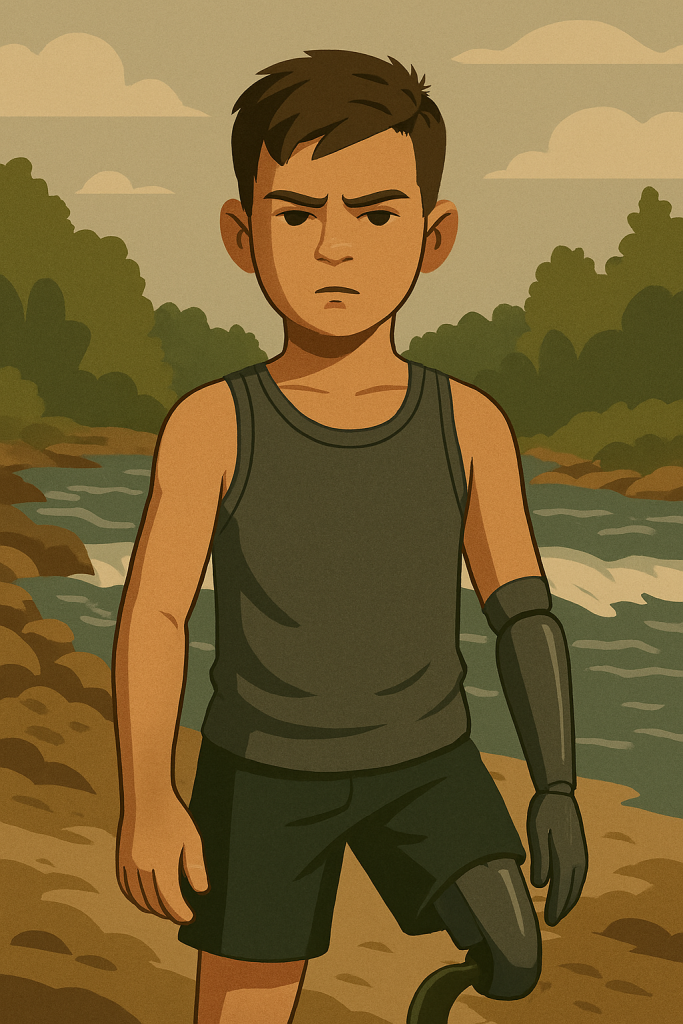
Team Dynamics and Peer Validation
Team environments in disabled sport offer unique psychological benefits – including belonging, validation, and shared resilience. Athletes often report that peer support is more impactful than external praise. Teams become microcultures where disability is normalized and celebrated. Research shows that athletes in inclusive teams experience lower anxiety, higher motivation, and stronger identity integration. Peer validation reinforces self-worth and fosters emotional safety. Conflict resolution within teams often requires disability-specific sensitivity – including awareness of communication styles, access needs, and trauma histories. Coaches who cultivate inclusive team cultures tend to produce more psychologically resilient athletes. Team rituals – from chants to shared meals – reinforce cohesion and symbolic identity. The psychological architecture of team sport is layered – blending performance with emotional intimacy and cultural affirmation.
Self-Efficacy and Performance Psychology
Self-efficacy – the belief in one’s ability to succeed – is a cornerstone of disabled sport psychology. Athletes who perceive themselves as capable tend to perform better, recover faster, and persist longer. Bandura’s theory of self-efficacy has been widely applied to para-sport contexts – showing that mastery experiences, verbal encouragement, and vicarious modeling all enhance confidence. Disabled athletes often face additional barriers to self-efficacy – including societal doubt, medicalization, and limited access. Sport becomes a proving ground – where each performance reinforces or challenges internal beliefs. Coaches play a critical role in shaping self-efficacy through feedback, goal setting, and emotional support. Visualization and mental rehearsal are common tools for building confidence. Self-efficacy is dynamic – it evolves with experience, context, and community affirmation.
Cognitive Adaptation and Strategic Intelligence
Disabled athletes often develop unique cognitive adaptations to navigate sport-specific challenges. These adaptations include spatial reasoning, proprioceptive recalibration, and strategic compensation. Research in neuroplasticity shows that the brain reorganizes itself in response to physical difference – enhancing certain cognitive functions. Athletes with visual impairments may develop heightened auditory processing – while those with limb differences often refine spatial awareness. Strategic intelligence is also shaped by lived experience – athletes learn to anticipate barriers and adapt in real time. Coaches who recognize these adaptations can design more effective training programs. Cognitive flexibility is a key predictor of success in disabled sport – allowing athletes to shift strategies and remain resilient under pressure. These adaptations challenge conventional ideas of intelligence and performance.
Emotional Regulation and Competitive Pressure
Competitive environments can trigger intense emotional responses – including anxiety, frustration, and elation. Disabled athletes often develop advanced emotional regulation strategies to maintain focus and composure. Techniques include mindfulness, breathing exercises, and cognitive reframing. Research shows that athletes who regulate emotions effectively tend to perform better and recover faster. Emotional regulation is also social – shaped by coaching style, team culture, and spectator behavior. Disabled athletes may face additional emotional stressors – including stigma, visibility pressure, and medical uncertainty. Coaches who prioritize emotional intelligence foster healthier athlete development. Rituals and routines can help athletes manage pre-competition nerves. Emotional regulation is not just about control – it’s about channeling energy into strategic performance.
Symbolic Representation and Cultural Impact
Disabled athletes often serve as cultural symbols – representing resilience, transformation, and resistance. This symbolic role carries psychological weight – shaping identity, motivation, and public perception. Athletes may feel pressure to represent their community or challenge stereotypes. Research in cultural psychology shows that symbolic representation can enhance self-worth but also create emotional strain. Media narratives often simplify or sensationalize disabled athletes – reducing complex identities to inspirational tropes. Athletes who reclaim their narrative tend to experience greater psychological autonomy. Symbolic representation is also strategic – athletes use performance, speech, and visual motifs to communicate deeper truths. Cultural impact is cumulative – each performance contributes to a broader shift in societal consciousness.
Trauma, Memory and Athletic Reprocessing
Many disabled athletes carry trauma—whether from injury, medical intervention, or systemic exclusion. Sport becomes a space for reprocessing that trauma through embodied movement and symbolic action. Studies in somatic psychology suggest that physical activity can help integrate traumatic memory and restore agency. Athletes often report that sport allows them to reclaim control over their bodies and narratives. Trauma reprocessing is complex—it requires psychological safety, community support, and intentional reflection. Coaches who understand trauma-informed practice can foster healing environments that prioritize emotional regulation and trust. Rituals, journaling, and storytelling are common tools for integrating experience and reframing pain. Athletic reprocessing is not about forgetting—it’s about transforming memory into strength. Disabled sport offers a rare convergence of physical exertion and emotional catharsis. The body becomes both archive and instrument—carrying history while rewriting it through performance.
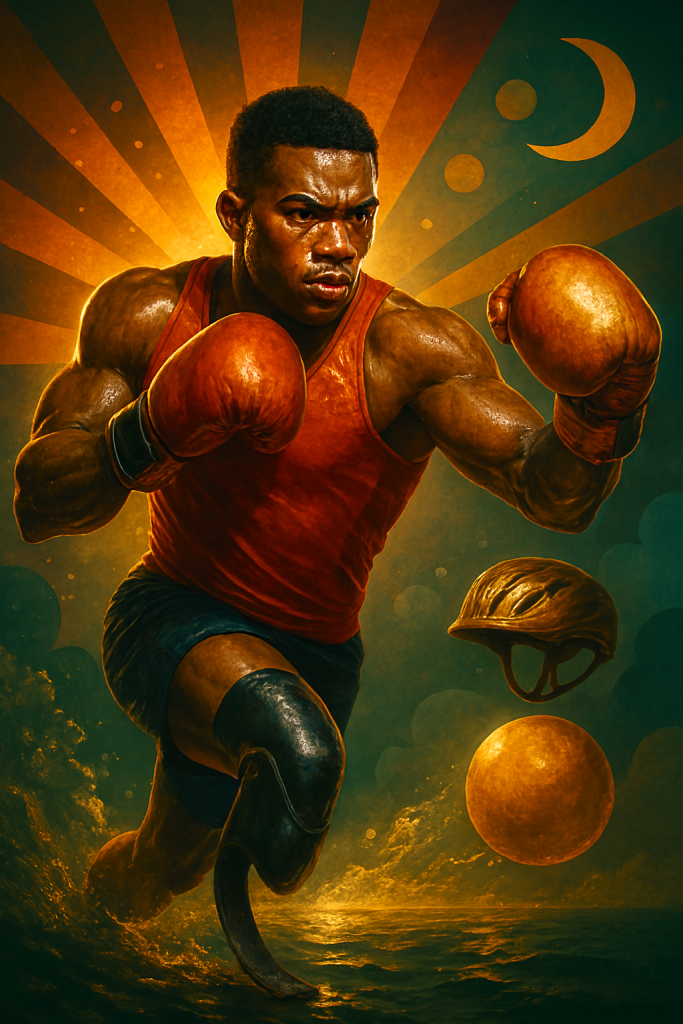
Visibility, Spectatorship and Emotional Labor
Disabled athletes often perform under the gaze of spectators who carry unconscious biases and expectations. Visibility can be empowering—but it also demands emotional labor. Athletes may feel pressure to educate, inspire, or represent their entire community. Research in disability studies shows that public performance can reinforce agency but also trigger anxiety and self-monitoring. Spectatorship is not neutral—it shapes athlete psychology through feedback, attention, and symbolic framing. Athletes who are hyper-visible may struggle with privacy, identity fragmentation, and emotional exhaustion. Coaches and media professionals can mitigate harm by fostering respectful, informed engagement. Visibility should be co-authored—not imposed. Emotional labor includes managing interviews, social media, and public narratives. Disabled athletes often become accidental advocates—navigating complex intersections of sport, identity, and representation. Understanding this labor is essential for ethical support and sustainable performance.
Intersectionality and Psychological Complexity
Disabled athletes are not defined solely by disability—they inhabit multiple identities that shape their psychological experience. Race, gender, sexuality, class, and cultural background all intersect with disability in sport. Intersectionality theory reveals how overlapping systems of oppression influence mental health, access, and representation. Athletes from marginalized communities may face compounded stigma and reduced support. Psychological research shows that intersectional identity can both enrich and complicate self-perception. Coaches and institutions must recognize these layers to provide holistic support. Cultural competence is not optional—it’s foundational to ethical sport psychology. Athletes who feel seen in their full complexity tend to report higher wellbeing and stronger performance. Intersectionality also shapes coping strategies—drawing on ancestral resilience, community wisdom, and cultural ritual. Disabled sport must evolve beyond single-axis narratives to honor the full spectrum of athlete experience.
Coaching Psychology and Adaptive Leadership
Coaching disabled athletes requires more than technical expertise—it demands psychological insight and adaptive leadership. Coaches must understand disability-specific needs, trauma histories, and emotional regulation strategies. Research shows that psychologically attuned coaching improves athlete retention, performance, and mental health. Adaptive leadership includes listening, flexibility, and co-creation of goals. Coaches who foster autonomy and emotional safety build stronger teams and more resilient athletes. Feedback must be tailored—balancing challenge with affirmation. Coaches also serve as cultural translators—helping athletes navigate institutional systems and public representation. Ethical coaching includes ongoing education in disability studies, mental health, and intersectionality. The coach-athlete relationship is a psychological ecosystem—shaped by trust, communication, and shared vision. Disabled sport thrives when coaching is relational, reflective, and radically inclusive.
Media Narratives and Psychological Framing
Media coverage of disabled sport plays a powerful role in shaping public perception and athlete psychology. Narratives that frame athletes as “inspirational” or “overcoming” can be reductive and emotionally taxing. Research in media psychology shows that framing influences identity, motivation, and stigma. Athletes who are portrayed as complex, strategic, and culturally embedded tend to report higher psychological autonomy. Media professionals must move beyond pity and spectacle—toward storytelling that honors nuance and agency. Athletes often co-author their public image through interviews, social media, and visual motifs. Psychological framing includes tone, language, and symbolic context. Misrepresentation can trigger emotional distress and identity fragmentation. Ethical media engagement requires collaboration, consent, and cultural literacy. Disabled sport deserves coverage that reflects its depth, diversity, and psychological richness.
Institutional Barriers and Mental Health Impact
Disabled athletes often face institutional barriers that affect mental health—ranging from inaccessible facilities to discriminatory policies. These barriers create chronic stress, reduced opportunity, and emotional fatigue. Research in sports sociology shows that systemic exclusion correlates with anxiety, depression, and burnout. Institutions must address structural inequities to support athlete wellbeing. Mental health services should be disability-informed and culturally competent. Funding disparities also impact psychological resilience—athletes who lack resources may experience shame, isolation, and performance pressure. Bureaucratic navigation becomes a psychological task—requiring persistence, strategy, and emotional labor. Institutions that prioritize inclusion foster healthier, more sustainable sport ecosystems. Disabled athletes are not asking for charity—they’re demanding equity, respect, and psychological safety. Institutional reform is not peripheral—it’s central to mental health in disabled sport.
Embodiment and Somatic Intelligence
Disabled athletes often develop heightened somatic intelligence—deep awareness of body signals, movement patterns, and emotional states. Embodiment is not just physical—it’s psychological, symbolic, and relational. Research in somatics and neuropsychology shows that body awareness enhances emotional regulation, focus, and resilience. Athletes learn to interpret pain, fatigue, and tension as data—not failure. Somatic intelligence includes breathwork, proprioception, and intuitive movement. Disabled sport challenges conventional ideas of athleticism—revealing new forms of grace, power, and precision. Embodiment also intersects with identity—athletes reclaim their bodies as sites of agency and expression. Coaches who understand somatic cues can better support performance and recovery. Embodiment is a form of psychological literacy—reading the body as text, archive, and compass. Disabled athletes often teach us that intelligence is not just cerebral—it’s cellular, rhythmic, and deeply felt.
Conclusion – Sport as Psychological Liberation
Para and disabled sports are not just competitive arenas—they are psychological sanctuaries, cultural laboratories, and sites of liberation. Athletes in these domains navigate complex emotional landscapes shaped by trauma, stigma, and systemic exclusion. Through sport, they reclaim identity, build resilience, and challenge societal narratives. The psychology of disabled sport is layered—encompassing motivation, pain management, emotional regulation, and symbolic representation. Each performance becomes a statement of agency, a ritual of healing, and a blueprint for cultural transformation. Coaches, institutions, and media must evolve to meet the psychological needs of these athletes with respect, nuance, and ethical rigor. Disabled sport is not marginal—it’s mythic, strategic, and profoundly human. It teaches us that limitation is not the opposite of strength—it’s the beginning of a deeper kind.
Join the Discussion – Your Voice Matters
How do you see the future of disabled sport evolving—psychologically, culturally, and structurally? What stories, strategies, or symbols have moved you most?
#DisabledSportPsychology #ParaAthleteResilience #AdaptivePerformance #TraumaInSport #SomaticIntelligence #IntersectionalAthletes #SportAsHealing #InclusiveCoaching #AthleticIdentity #MentalHealthInSport #SymbolicPerformance #StigmaResistance #EmbodiedAgency #CulturalNarratives #PsychologicalLiberation


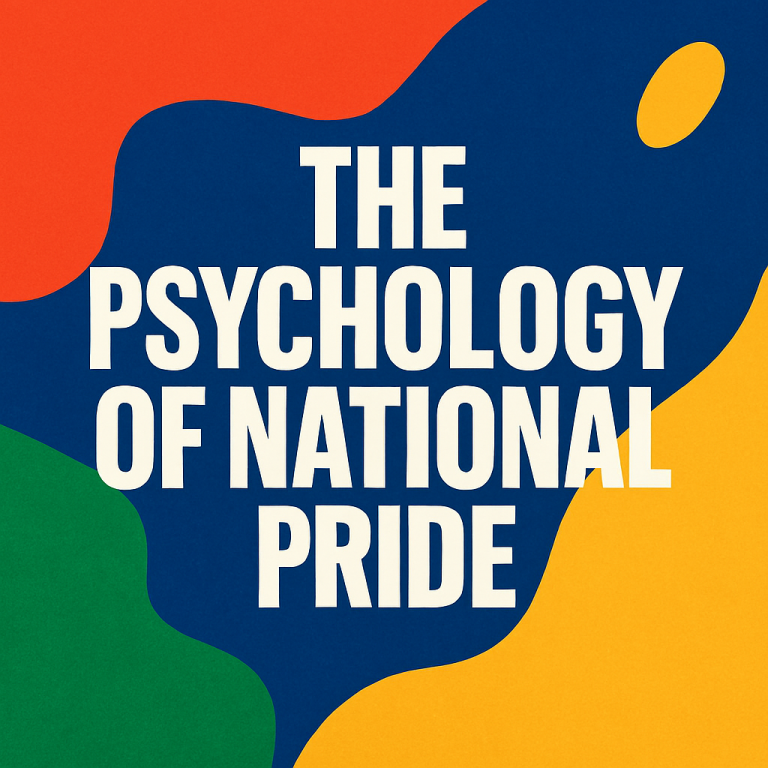


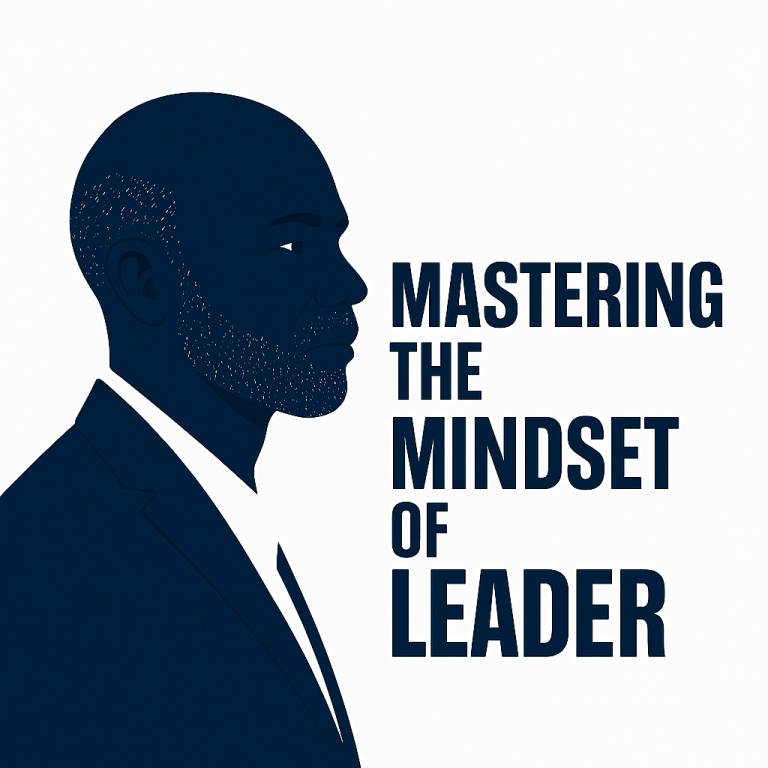


One Comment